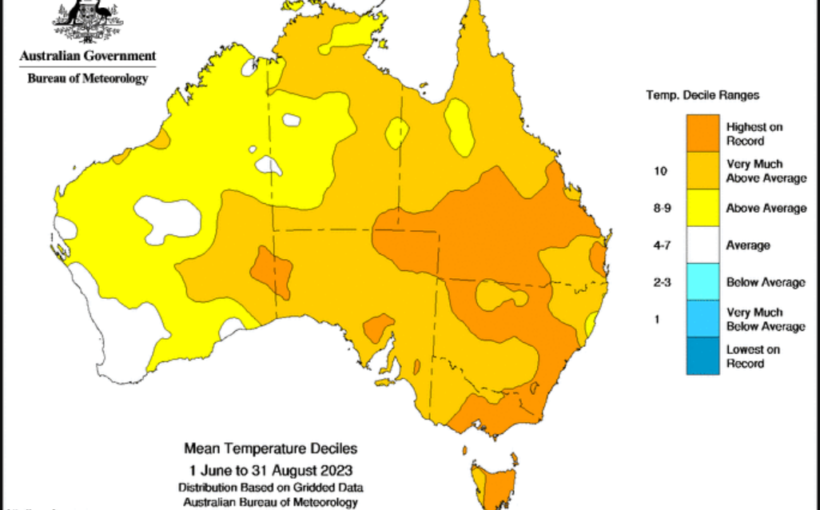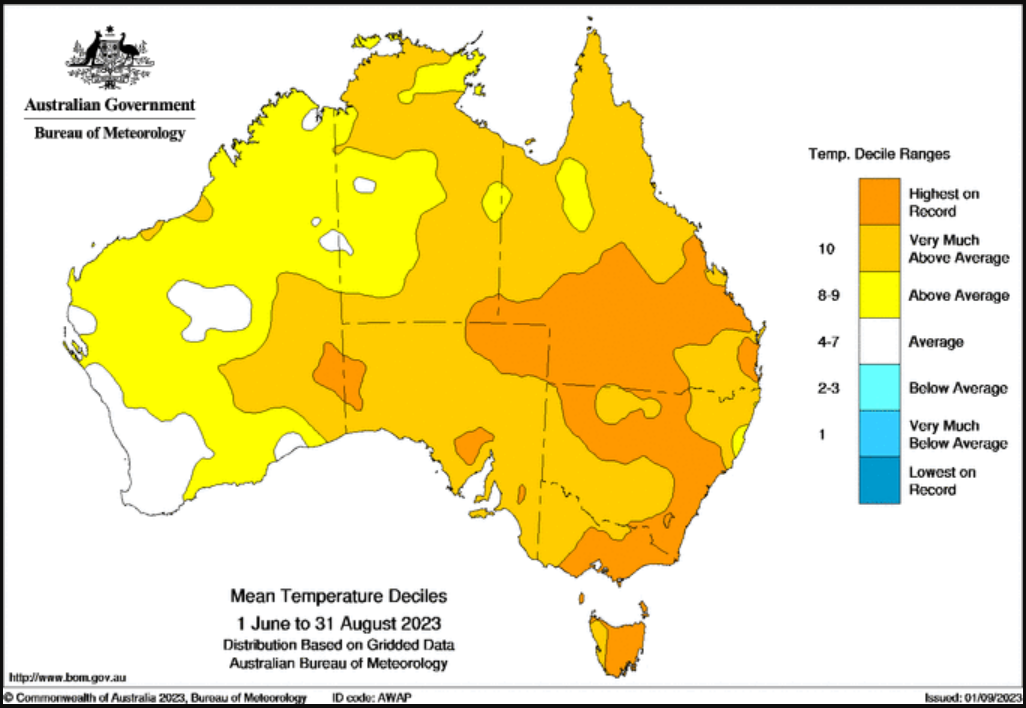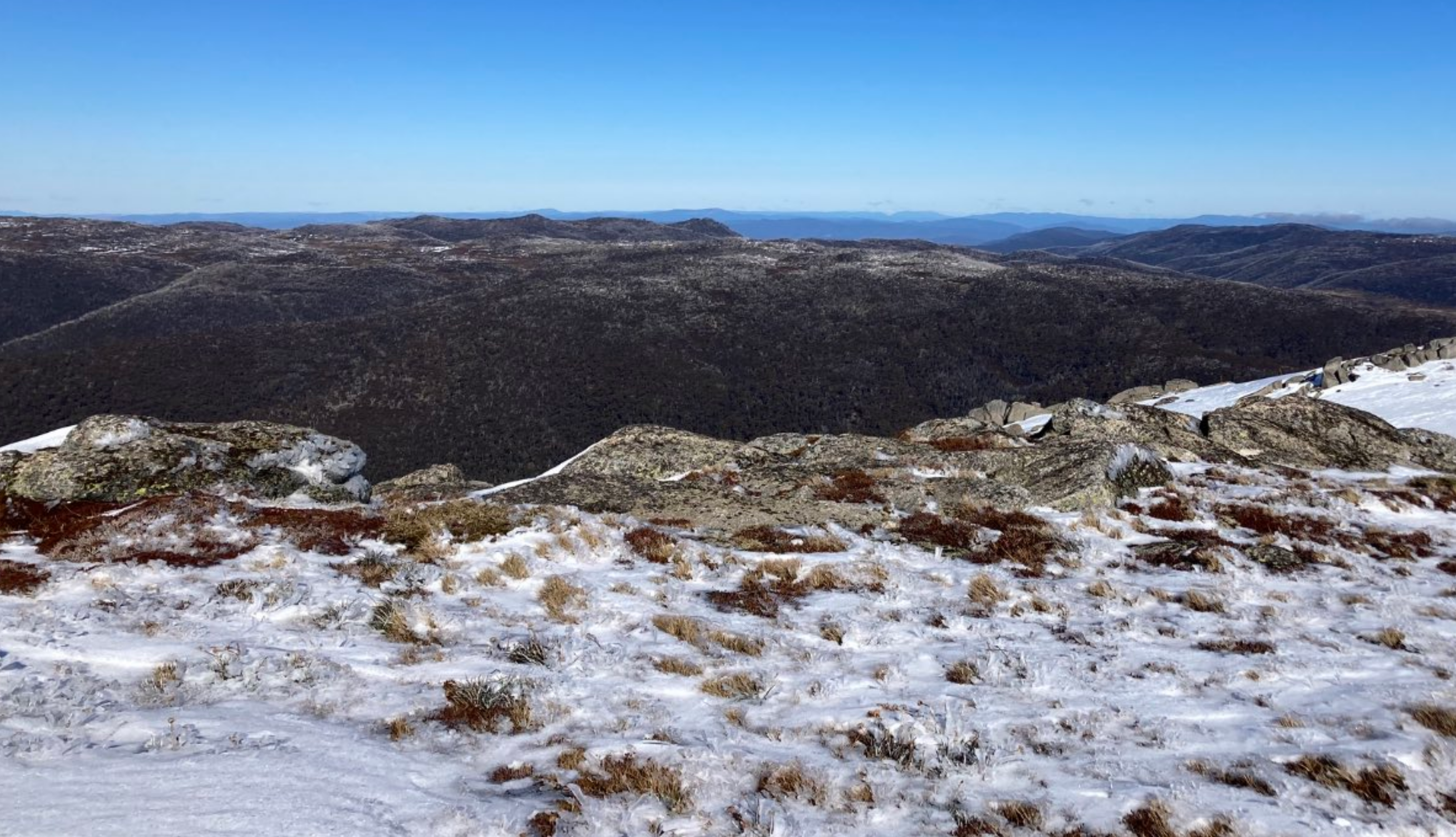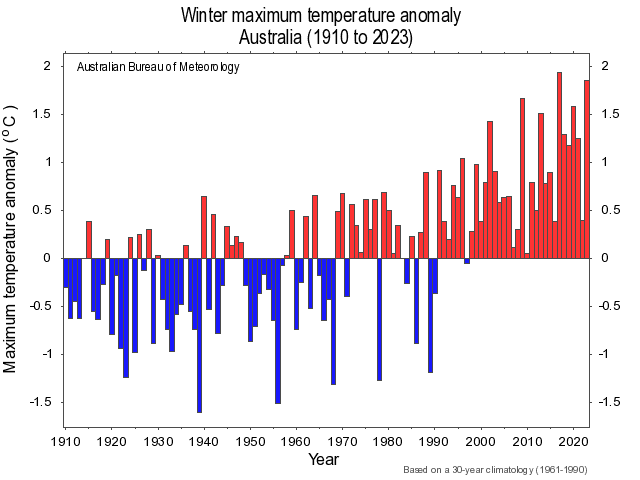Winter? What winter?
Australia has just sweated through its warmest winter on record with a national mean temperature that was 1.53 degrees above the long-term average for the country as a whole.
The Bureau of Meteorology's Seasonal Summary for winter 2023 revealed that maximums across Australia were 1.85 degrees above average, while minimums were 1.21 degrees above average.
READ MORE: Jacarandas to spring major surprise
The map above shows just how warm the winter of 2023 was compared to normal.
The orange areas show that parts of all eight states and territories were the warmest on record.
Eastern Australia had a particularly warm winter, with the map showing how Sydney, Canberra, Brisbane, Melbourne, and Hobart were all in the warmest-on-record zone.
It was also extremely warm across the Australian Alps, which helps explain the relatively poor ski season in the mainland alpine resorts.
READ MORE: 'Thundersnow' hits Alps despite record-breaking winter warmth
The chart below shows how the 2023 winter average maximum temperatures compare to the last 113 years of records.
It has now been 26 years since winter maximum temps across Australia were below the long-term average, in a clear signal of the warming trend in the nation's climate.
Meanwhile, the "coolest" state in relation to average in winter 2023 was Western Australia, but even it was warmer than usual, with mean temps 0.89 degrees above average.
READ MORE: Blue supermoon dwarfs iconic Australian landmark
Here's a rundown of temperature anomalies in your state in the winter of 2012:
- Australia as a whole: +1.53 degrees above average (warmest on record)
- Queensland: +2.32 degrees (warmest on record)
- South Australia: +1.75 degrees (2nd-warmest on record)
- New South Wales: +1.72 degrees (warmest on record)
- Northern Territory: +1.53 degrees (7th-warmest on record)
- Tasmania: 1.30 degrees (warmest on record)
- Victoria: 1.12 degrees (2nd-warmest on record)
- Western Australia: 0.89 degrees (9th-warmest on record)
Note that the ACT is not covered in that list, as there are not enough weather stations to generate a meaningful average across the territory.
But Canberra itself was 1.3 degrees above average, making its winter the second-warmest on record.
Meanwhile, the BoM has predicted a drier and warmer-than-average spring for Australia's east coast.
"We are looking at an above average bushfire risk this season … for large areas of NSW and South-East Queensland," BoM meteorologist Hugh McDowell said.
"With three wet years, we have seen some significant vegetation growth for large areas of NSW and Queensland."
He said the country was still on El Niño alert, meaning there was a 70 per cent chance of it developing.






